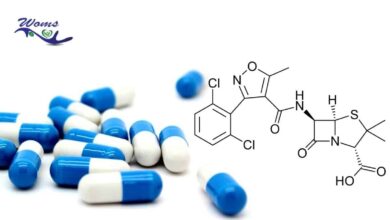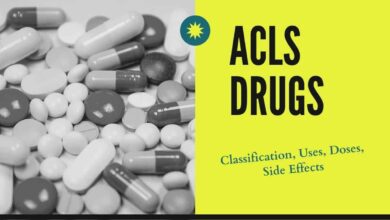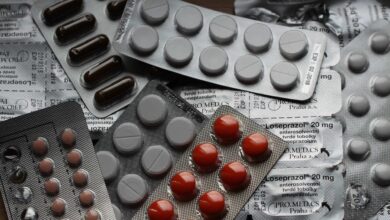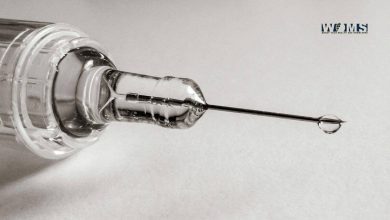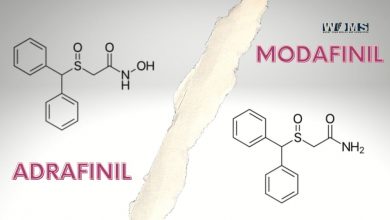Autacoids
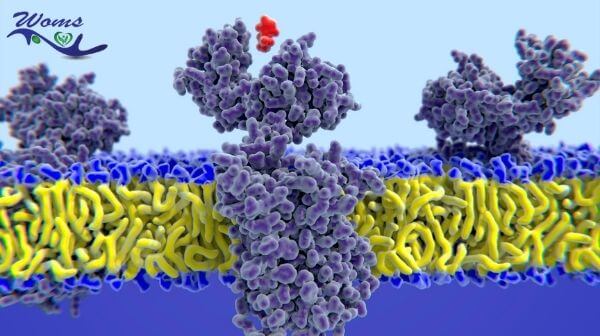
Autacoids are chemical substances which are produced within the body to help in the remedy of local injury. It is also known as a local hormone because it acts locally. The systemic effects of autacoids are transmitted via the body circulation. It is locally produced, metabolized, and also act locally.
Autacoids have a brief lifetime and it acts at the site of synthesis. It causes slow muscle contraction and shows various pharmacological activities.
Autacoids do not function as a classical blood-borne hormone. They have short half-life so they are short-lived and they are degraded rapidly.
Classifications of autacoids
The autacoids is classified into various classes. So let’s look into the classifications of autacoids. The classifications of autacoids is given below:
1. Decarboxylatedaminoacids
- Histamine
- Serotonin
2. Polypeptide:
- Angiotensin
- Plasmakinin
- Vasopressin
- Substance-P
- A vasoactive intestinal polypeptide (VIP)
- The slow-reacting substance of anaphylaxis (SRS-A)
3. Eicosanoids
- Leukotrienes (LT)
- Thromboxanes (TX)
- Prostaglandin (PG)
Common autacoids
Here are some common autacoids :
- Histamines
- Serotonine
- LT
- TX
- PG
- Substance-P
Criterai of autacoids
How can we say that it is an autacoid? To be an autacoid it must follow some criteria. The criteria of autacoids are:
- Auto means self and Akos means remedy
- Having local action and known as a local hormone
- They act as both vasodilator and vasoconstrictors.
- Short lifetime
- Produced by all cells
- Some are also in nervous tissue (histamine, serotonin)
Role of Autacoids
Autocoids have various roles in the body. Some of the roles of autacoids are given below:
They take part in:
- Inflammation
- Allergic reaction
- Anaphylactic reaction
- Neurotransmitter
- Gastric acid secretion
- Neuroendocrine regulation
- Wakefulness
- Decrease appetite
- Regulation of drinking
- Regulation of temperature
- Secretion of ADH
- Control of BP
- Perception of Pain.
Difference between autacoids and hormone
| Hormone | Autacoids |
| They are produced by gland or tissue. | They are produced by cell |
| It is stored in gland or tissue. | It is stored in membrane. |
| The dissemination occurs through the blood. | The dissemination occurs through intracellular space. |
| The major chemical substance is peptide/proteins, steroid, amines | The major chemical substance is lipid, amino acids and peptides |
| The action occurs through blood by endocytosis of receptor hormone complex | The action occurs through intracellular metabolization |
Histamine
- Histamine means tissue, so histamine means tissue amine
- It’s synthesis occurs from histidine decarboxylase
- Histamine is and autocoid
- It acts as a local hormone
- HIstamine is present in high concentration in the GIT, Skin, and Lungs
- It gets release from mast cell and basophil.
- Histamine gets metabolization by methylation and oxidation
- It has H1, H2 and H3 receptors
- It has a role in Meiners disease, diagnosis of achlorhydria, and pheochromocytoma.
Histamine receptors
H1 receptors
Site: bronchus, skin, adrenal medulla, urinary bladder, thalamus, hypothalamus, cerebellum
H2 receptor
Site: Gastric parietal cell, heart, uterus, mast cell
H3 receptor
Site : brain
Classification of antihistamines
- Generation : first generation, second generation
- Sedative action: sedative and non-sedative
First generation: having sedative action
Here are the list of first generation antihistamines.
- Promethazine
- Chlorpheniramine maleate
- Pheniraminemeleate
- Ketotifen
- Diphenhydramine
- Cyproheptadine
- Cyclizine/Meclizine
- Hydroxyzine hydrochloride
- Mebhydrolin
Second generation: Non-sedative
The list of second generation are:
- Loratadine
- Desloratadine
- Fexofenadine
- Terfenadine
- Mizolastine
- Levocetirizine
- Cetirizine hydrochloride
- Rupatadine
Advantages of second-generation over the first generation
The second generation is preferred over first generation due to following advantages:
- No sedative action and no drowsiness/hangover
- There is no cardiovascular adverse effects
- Safe in pregnancy
Indication of promethazine/cetirizine/ H1 antihistamine
H1 antihistamine is indiacted in following conditions:
Anti-allergic action
- Itching
- Running nose
- Urticaria
- Atopic dermatitis
- Contract dermatitis
- Insect bite
- Common cold
- Dyspnoea
- As a sedative (Diphenhydramine)
- Acts as an antiemetic (promethazine, Meclizine)
- As a anxiolytics (hydroxyzine hydrochloride)
- Acts as an antimuscarinic (Diphenhydramine)
The pharmacological action of H1 antihistamine
The pharmacological action of H1 antihistamine seen are:
- Antiallergic action
- Sedative action
- Antiemetic action
- Anti-parkinsonism action
- Alpha blocking action: hypotension
- Serotonin blocking action: weight gain
Adverse effects of promethazine/cetirizine
The adverse effects seen by the use of promethazine are:
- Drowsiness
- Dizziness
- Lassitude
- Weakness/fatigue
- Tired filling
- Blurred vision
Eicosanoids
Eikosa means 20 because all eicosanoids are products (oxygenated) of 20 carbon fatty acids.
Eicosanoids are:
- Prostaglandin (PG)
- Prostacyclin (PGI2)
- Leukotriene (LT)
- Thromboxane (TX)
Prostaglandin (PG)
- It is eicosanoid
- Prostaglandins come from the prostate gland and isolated from Spanish fluid
- Its synthesis occurs from arachidonic acid which is from membrane phospholipid.
- Prostaglandins act as a local hormone.
Role of prostaglandin
Prostagladin has various role in the body. It has role in:
- Cytoprotection of GIT
- Facilitation of labor
- Male fertility
- Inhibition of platelet aggregation
- Maintain the potency of ductus arteriosus
- It is inhibited by steroid and NSAIDs
Important prostaglandins analogues
Some of important prostaglandins analogues are:
- Misoprostol
- Dinoprostone
- Carboprost
- Alprostadil
- Gemeprost
- Epoprostenol
- Latanoprost
Indication of misoprostol
Misoprostol is in use for various purposes. Here are some indications of misoprostol.
- Cytoprotection in PUD (NSAIDs induced PUD)
- Induction of labour
- Therapeutic abortion
- Also treatment and prevention of PPH
- Sometimes it is in use for the treatment of erectile dysfunction
Indication of dinoprostone
Dinoprostone comes in use for various purposes. Here are some indications of dinoprostone.
- Indication of labour
- Augmentation of labour
- Midterm abortion
Indication of carboprost
The indication of carboprost are given below:
- To control PPH
- Missed abortion
Indication of alprostadil
The indication of alprostadil are given below:
- To maintain patency of ductusarteriosus
- Erectile dysfunction
- Raynauds disease
Indication of Epoprostanol
The indication of epoprostanol are given below:
- To prevent platelet aggregation
- Raynaud’s disease
- Pulmonary hypertension
Indication of latanoprost
Latanoprost is used for:
- Wide angle glaucoma
Summary:
Autacoids are chemical substances that are produced within the body to help in the remedy of local injury. It is also known as a local hormone because it acts locally. The systemic effects of autacoids are transmitted via the body’s circulation.
It is locally produced, metabolized, and also act locally. The autacoids are classified into various classes. I hope this article has helped you to know autacoids more thoroughly.
FAQs:
1. Is histamine an autacoid?
Yes, histamine is an autacoid and is produced by mast cells. It acts as a mediator of inflammation.
2. Is serotonin an autacoid?
Yes, Serotonin is an important autacoid. It is an amine autacoid.
3. Why autacoid is known as local hormones?
Autacoid is known as local hormones because they act on the nearby cells that secrets it and have a brief time of action.
4. Does autacoid have good benefits for the body?
Autacoid is good for health as it performs functions like modulating blood flow in specific tissues or smooth muscle functions. Similarly. It has an important function in allergy and inflammation of the body.
5. Which autacoid causes gastric acid secretion?
Autacoid histamine is an important factor that causes gastric acid secretion. Histamine increases the secretion of gastric acid as H2 receptors regulate gastric acid secretion from the parietal cells of the endothelium of the stomach.
